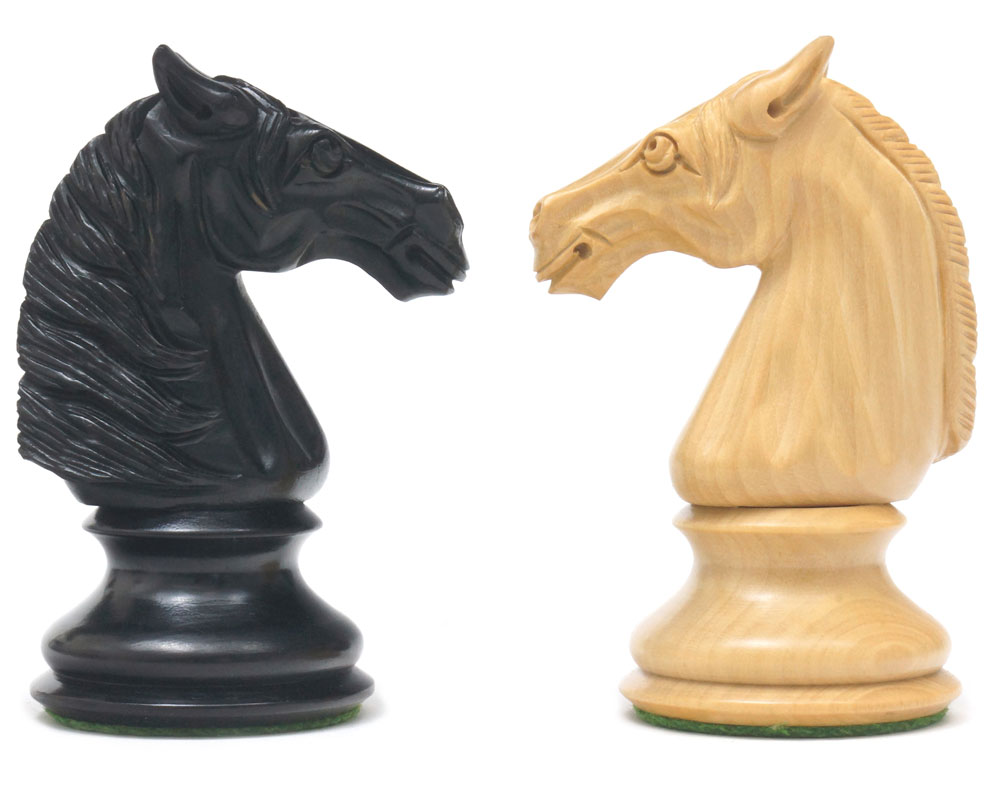Staunton Chess Sets
Staunton chess sets are the definitive standard for chess pieces worldwide, distinguished by their practical and aesthetic design that revolutionized chess play since their introduction in 1849. Named after Howard Staunton, the leading chess player of his time, these sets feature a distinctive style that has become synonymous with the game of chess itself. Their introduction brought about uniformity to the game, replacing the varied and often confusing designs previously used, and establishing a universal standard for chess competitions and casual play alike.

History and Evolution
The origin of the Staunton chess set traces back to London, 1849, when Nathaniel Cook registered the design, which was then manufactured by John Jaques of London. Howard Staunton's endorsement of the set, through his promotion and use in play, led to its widespread adoption. The design was aimed at providing a set of easily recognizable, standardized, and elegantly functional pieces suitable for both amateur and professional play.
Over the years, the Staunton design has seen various adaptations and iterations while maintaining the core elements that make it distinctive: a cross atop the king, a coronet for the queen, a mitre for the bishops, a horse's head for the knights, a castle for the rooks, and a simple round top for the pawns. The set's design not only standardized the appearance of chess pieces but also enhanced the game's visual appeal and practicality, ensuring pieces were sturdy and unlikely to tip over during play.
Chess Before Staunton
Before the introduction of the Staunton chess set in 1849, the game of chess was played with a diverse array of piece designs, varying widely from one region to another. These sets, often ornate and elaborately carved, lacked standardization, leading to confusion among players, especially in international play. Designs could range from abstract shapes to detailed figures representing medieval courts, with each culture bringing its own aesthetic and symbolism to the game. This variety, while culturally rich, presented practical challenges during play, as the appearance and size of the pieces could significantly affect the game's clarity and fairness. The Staunton chess set emerged as a solution, offering a uniform, practical, and elegant design that quickly became the global standard, transforming the game into the universally accessible and competitive sport it is today.
Variations and Adaptations
From its inception, the Staunton design has been produced in a plethora of materials, sizes, and weights, catering to a broad spectrum of preferences and uses. Initially crafted from wood and ivory, modern sets are available in plastic, metal, glass, and luxury woods, such as ebony and rosewood, accommodating both everyday players and collectors.
A significant area of variation in the set is the design of the knight, which is often seen as an opportunity for artisans to showcase their skill. The knight can range from a simple, stylized horse's head to intricately carved representations, with the level of detail and artistic expression varying greatly across different sets. This variation makes the knight a focal point of craftsmanship and creativity in Staunton sets, with some collectors choosing sets based solely on the knight's design.

Contemporary Relevance
Today, Staunton remains the gold standard for chess play, endorsed by the World Chess Federation (FIDE) for use in all official games. The design's endurance over nearly two centuries highlights its perfect balance of form and function, proving that Nathaniel Cook's original vision for a practical yet elegant chess set was truly timeless.
Modern adaptations have seen sets made with sustainable materials and innovative designs that pay homage to the original while fitting the aesthetic and ethical preferences of contemporary society. Additionally, limited edition and luxury sets often incorporate exotic materials and handcrafted details, offering unique pieces for display and play.
Conclusion
The Staunton chess set stands as a paragon of design in the world of chess, embodying a rich history that spans from its mid-19th century origins to its present-day status as the definitive standard for chess pieces. Its enduring popularity attests to the timeless appeal of its design, a perfect amalgamation of beauty, functionality, and historical significance. Whether for competitive play, casual games, or as a collector's item, Staunton chess sets continue to be the premier choice for chess enthusiasts around the world, a testament to their lasting legacy and universal appeal.








































